#socialist cinema
Photo

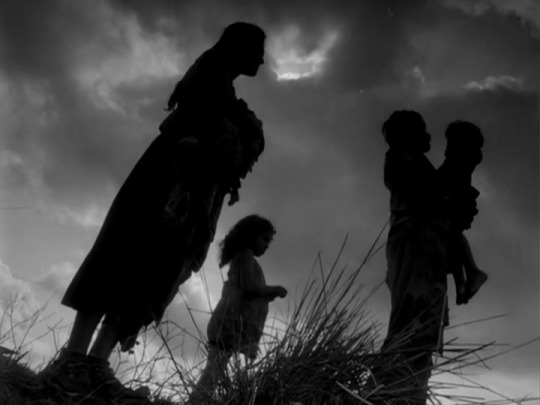
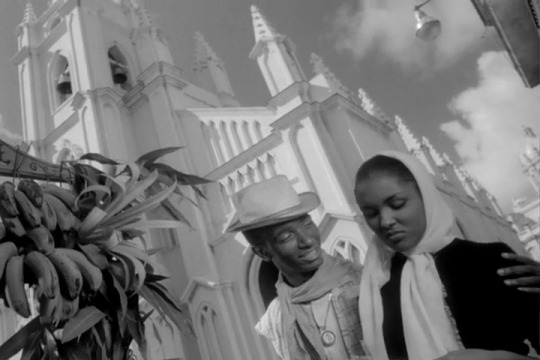


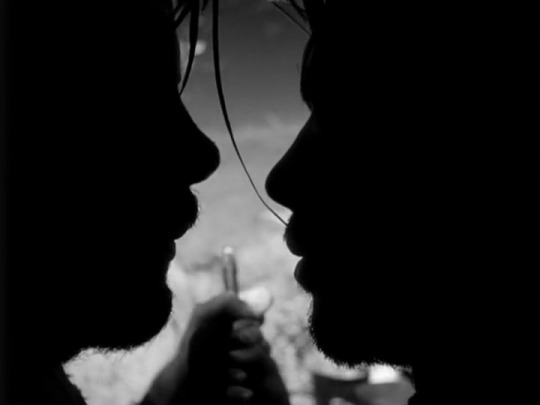
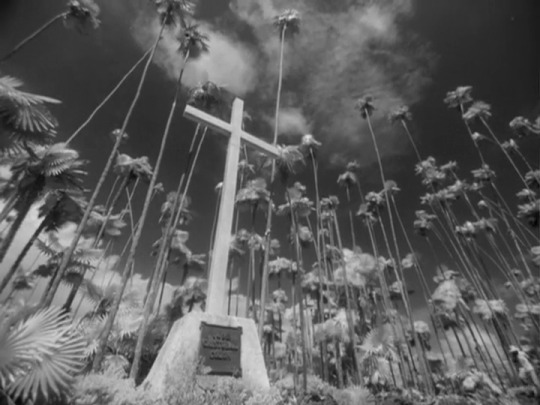



I Am Cuba (Soy Cuba/Я - Куба) | Mikhail Kalatozov | 1964 | USSR
#socialist cinema#communist cinema#soviet cinema#cuban cinema#mikhail kalatozov#cinematography#cinema#film stills#film grab#films#cuba#ussr
110 notes
·
View notes
Note
I just saw you reposted something about "Drei Haselnüsse für Aschenbrödel".
It is one of my absolute favorite Christmas movies.
My parents are from the DDR (I was three years old when Germany was united again), so growing up I watched a couple of DEFA fairy tale movies.
Most notably:
Die Prinzessin mit dem goldenen Stern (Princezna se zlatou hvězdou)
And I also vaguely remember:
Das singende, klingende Bäumchen
Das kalte Herz
Frau Holle (damn, the Frau Holle in this one reminded me of the strict, authorative, post-DDR kindergarten teachers I had and it's giving me the creeps)
Schneeweißchen und Rosenrot
König Drosselbart
Yes, I really like Three Wishes for Cinderella. It's not a tradition here to watch it during Christmas, but I know it's the case for other European countries. I'm more used to watch Sissi with Romy Schneider during that period.
I actually found out about it whilst I was doing some research on socialist co-productions. I was trying to make the case that Hollywood wasn't the only industry able to deliver entertainment and that Europe wasn't only the land of art cinema. Co-productions were very successful and it became a bridge across the Iron Curtain. It also dismantled a bit the illusion that all countries under the socialist regime were isolated, which is an ongoing narrative to this day.
Anyway, I found an article a few years ago that was a detailed analysis on the production of the film and its cultural impact. There's something so particular, especially in the cinematography, of the fairytales adapted for screen in the 1970s. It's also a genre that can easily be approved, particularly in national cinemas with a propagandistic component. They were safer on the surface.
Thank you @guacamoli-avocadorado for sharing those other titles, I'll look them up.
Three Wishes for Cinderella is also available on youtube with English subtitles for anyone who might be interested in watching it.
youtube
9 notes
·
View notes
Text
Coming in January 2024, the second installment of my Socialist Cinema series:
#united front#communism#anticapitalism#socialism#socialist cinema#cinema#film#movies#film analysis#hg wells#things to come#futurism#futuristic#science fiction#sci fi
0 notes
Text
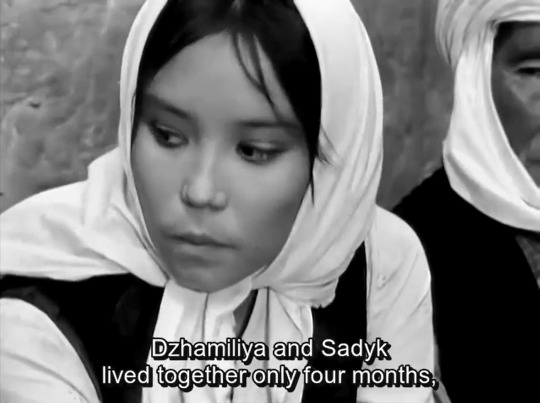
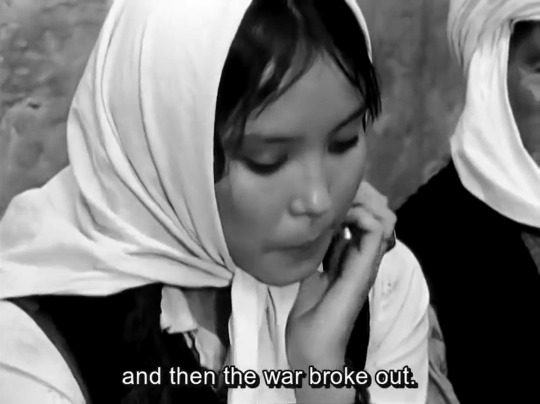
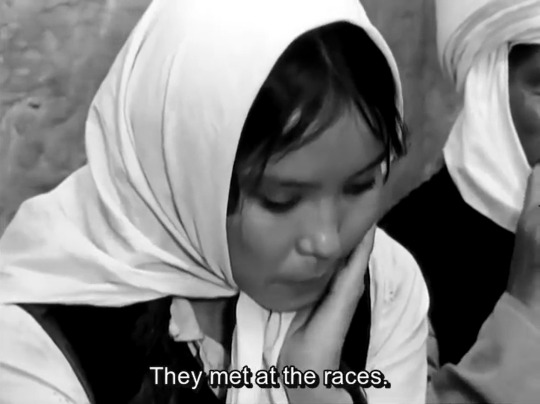
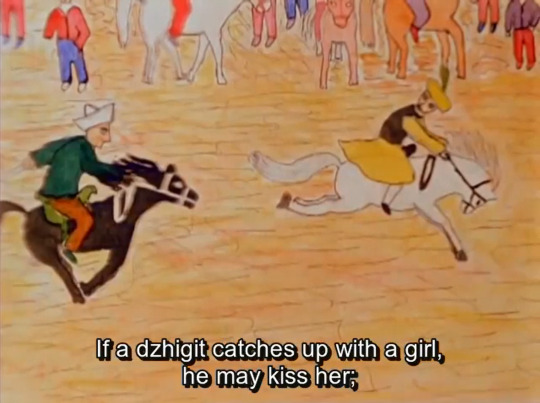
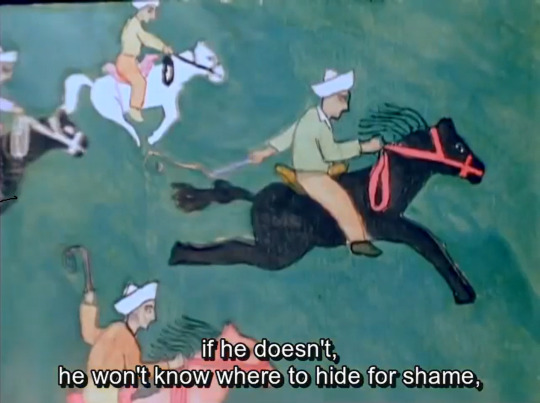




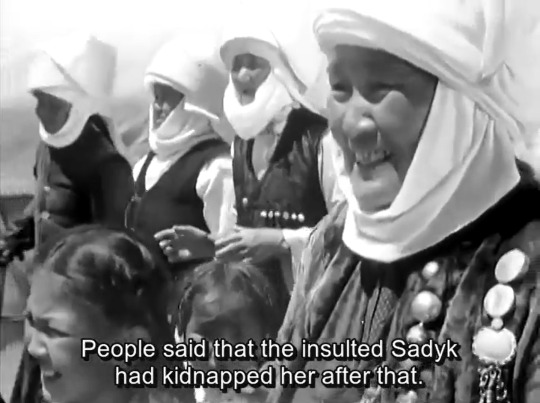
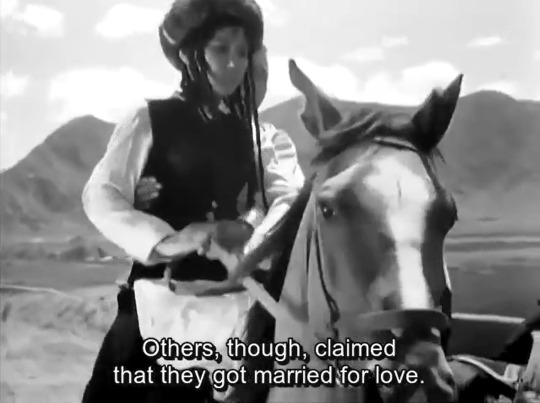
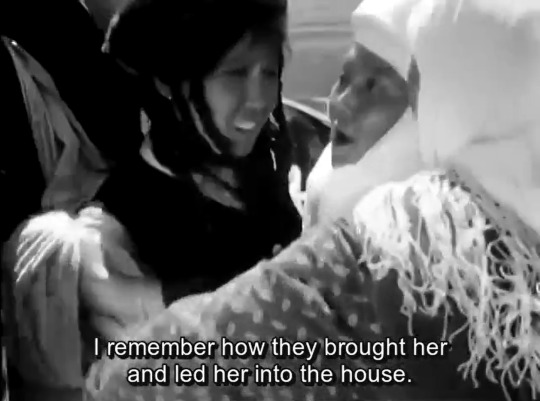
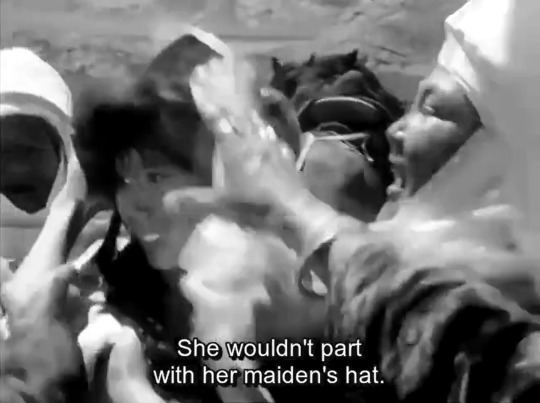

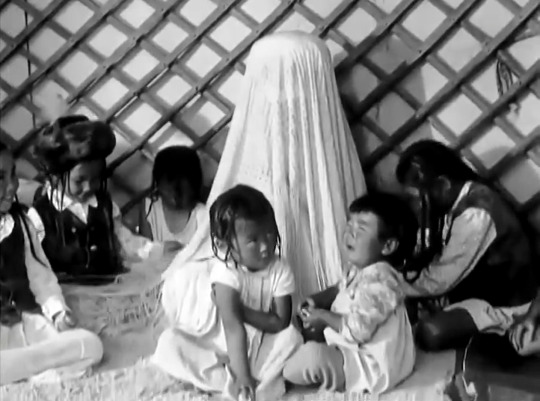


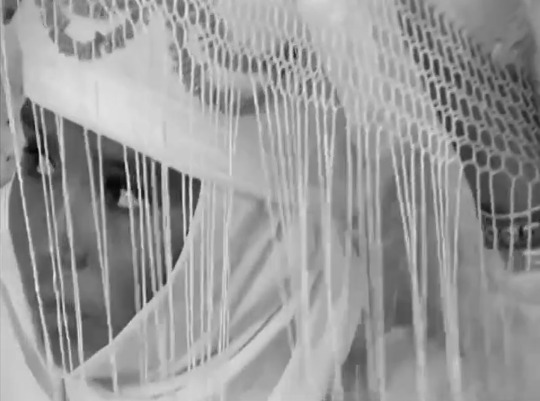
Movie: Jamilya (Джамиля)
Year: 1969
Location: Kirghiz Soviet Socialist Republic, Soviet Union
Directors: Irina Poplavskaya and Sergei Yutkevich
The Second World War is raging, and Jamilya's husband is off fighting at the front. Accompanied by Daniyar, a sullen newcomer who was wounded on the battlefield, Jamilya spends her days hauling sacks of grain from the threshing floor to the train station in their village in Kyrgyzstan. Spurning men's advances and wincing at the dispassionate letters she receives from her husband, Jamilya falls helplessly in love with the mysterious Daniyar in this heartbreakingly beautiful tale.
#film#cinema#ussr#Kyrgyzstan#soviet#world cinema#Kyrgyzstani#Kirghiz Soviet Socialist Republic#USSR#Soviet Union#Irina Poplavskaya#Sergei Yutkevich#Soviet films#Central Asia
36 notes
·
View notes
Photo
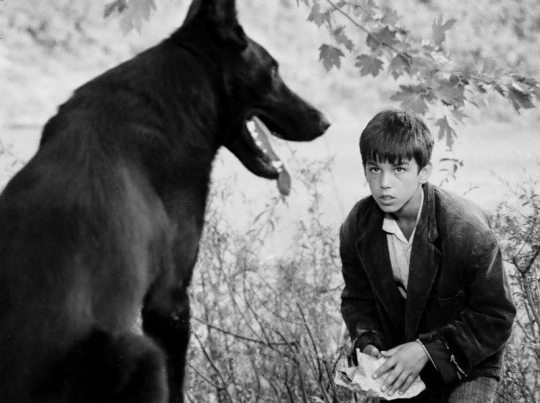
Gof & Tomka (Enea Zhegu -1964 - 2022)
Tomka dhe shokët e tij [Tomka & friends] (Xhanfise Keko:1977)
#Kinostudio Shqipëria e Re#albanian artists#socialist realism#albania#cynophobia#dogs of tumblr#animals#albanian cinema#socialist albania#Enea Zhegu
3 notes
·
View notes
Text
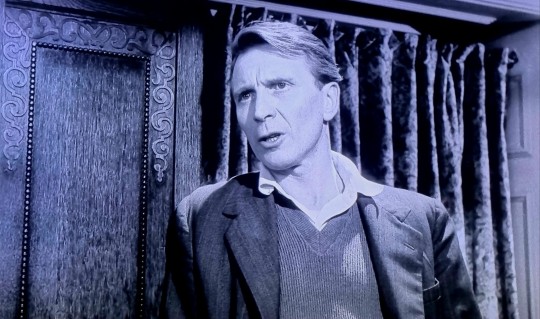
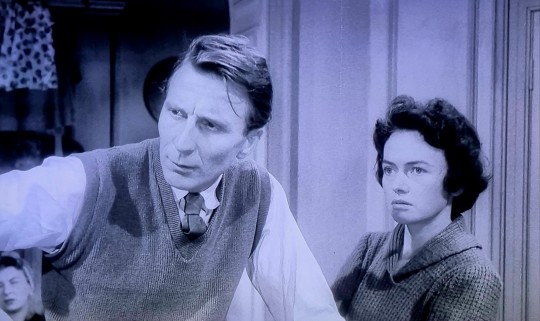

Alfred Burke strikes a husbandly pose as concerned neighbour Mr. Barnes in The Man Upstairs (1958)
#fave spotting#alfred burke#the man upstairs#1958#british cinema#public eye#character actors#the film is about Richard Attenborough as a tenant of a boarding house who has a breakdown and the reactions#of the other tenants (and authorities etc) to the situation. alas‚ of all the tenants‚ Alfie is the only one out of the house at the time#and returns (and thus enters the film) only at about the halfway point. this means that whilst the others have all had rather nice little#characterisations set up and been introduced to the viewer‚ Mr Barnes ends up having little personality beyond 'husband of Mrs Barnes'#Mrs B being one of the main supporting roles. needless to say Alfie attacks the role regardless and manages to bring out some subtle shades#of indignation at injustice (and even a hint of socialist conscience) to a fairly underwritten part. also of note‚ Mrs B is played by noted#Australian star Dorothy Alison‚ so Alf finds himself doing a modest little attempt at an aussie accent... I'll be honest i didn't even#notice the first few times he spoke‚ but it come out a little more when he's heated (a nice touch of realism actually)
6 notes
·
View notes
Text
Ok , sometimes you just realize that we just use the powerful and complicated stuff we have to do basically the same things pepole in the past did :
The romans had curse tablets they hanged on the homes of pepole that pissed them off , they where casted ig , idk i don't wanna research it for a shitpost , anyhow how how is that different from shit talking to someone on social medias ?
In the end the result you achive is the same : they read what you wrote them , get sad or don't care abt it , you get catharsis because you think you did somenthing and the conflict is maybe peraps resolved ...
Idk it's better than if you ambushed them with a sword/gun and murdered them , or lit their house on fire/sent a bomb package ,
So yeah better to write an angry tweet than to riot everywhere for an community that exists ,
Then yes the best would be to have everyone meditate enough to be able to get over their emotions , and so have a sort of social nirvana ,
The romans didn't have the resources to achive that ,
We do however ...
Same for cave paintings , some where apparently made with some sorts of proto animation in mind , and i can't help but seeing the parallels between pepole getting in a dark room to hear a story with cinemas ,
Wich cast cinemas as honestly a sort of magical place : these dimly lit roms , in wich pepole get in and watch moving images projected by a light ...
It also doesn't help that movies are made by many many more than one person , it's by somenthing you can't make alone , and even if it's done alone the tools and the tecniques you use to make it where made by other pepole and made accessible to you ...
So ye , in that aspect we are still deeply social apes that have figured out how to trim and handle the canopy of reality , as a way to move trough it better ,
When we can't shout at each other we draw our angry words and we send them to the person we are feuding with , when reality is boring we get in a dark place and we wonder ...
What would be other experiences like these ones ?
4 notes
·
View notes
Text
In all the discourse about anti-intellectual USAmerican vs foreign media people always use as examples eastern European movies and novels etc and the rebuttal from these anti-intellectual USAmerican is always that people criticizing them are racist because they only seem to care about them not liking media from white countries and... Idk, this is probably due to the different culture regarding xenophobia and racism in the us vs Europe, but coming from a Western European country where eastern immigrants have been depicted as criminals and savages, and their history and cultures are barely known, and seeing those people try to depict them as the epitome of whiteness does make me feel some sort of way. These people seem really convinced that serbian or polish culture are as egemonic as french or russian culture?
(now, my blog is very tiny so I hope I won't have problems with this post but to be clear, since every time in history we tried to talk about the cultural differences between north America and Europe we always end there: in no way I want to undermine the fact that white Europeans can be and are racists against other groups of people)
#i can't speak about cinema because I don't really care about it#but i really like to get to know other cultures through books#and i promise you its not easy to find idk romanian classical literature translated#anti intellectualism#personal#are socialist-era films so egemonic?
4 notes
·
View notes
Text
Did you notice that homosexuals, feminists and diversity believers are so easily offended by this 1986 action comedy movie? Crocodile Dundee is a cinematic classic and there is nothing the Satanic Left and oversensitive liberals can do to change it based on their radical beliefs.

Political correctness is always garbage and Crocodile Dundee will help you get rid of it.
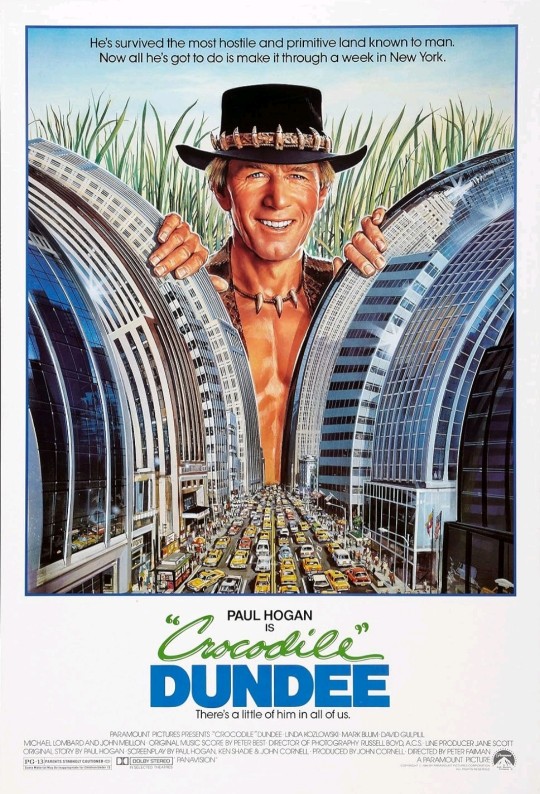
Go and watch Crocodile Dundee!
For more fun stuff, visit www.CarloCarrasco.com
#movies#film#cinema#CrocodileDundee#Australia#America#Democrats#Communist#socialist#Marxist#liberal#LGBTQ#gay#homosexual#transgender#LGBT#diversity#inclusion
0 notes
Note
There is a difference between Bollywood and Bombay cinema?
listen, subcontinental cinema began in bombay; the very first exhibition of the lumieres' cinematographe was held there in 1896, a few months after its debut in paris, 1895. this event predates the discursive existence of bollywood and hollywood. shree pundalik and raja harishchandra, the films that are generally considered the very first subcontinental features were also exhibited there first.
subcontinental cinema under british colonialism was produced in certain metropolitan centers such as lahore, hyderabad, and calcutta; bombay was just one of them. in 1947, when the indian nation state was formally inaugurated, the idea of a "national cinema" began forming, but given the cultural and linguistic heterogeneity of the indian union, this was quite untenable. regional popular cinemas flourished well into the 1950, 60s, 70s, and 80s and various art cinemas began taking shape alongside.
under the economy that i'm going to completely elide as "nehruvian "socialism"" bombay cinema focused on broadly "socialist" themes, think of awara (1951), do beegha zameen (1953), pyaasa (1957), all of which focus on inequality in indian economy and society from different perspectives. these films were peppered in with historical dramas, and adaptations from literature, but the original stories tended towards socialist realism. reformist films centering the family generally waxed poetic on the need to reform the family, but i haven't seen enough of these to really comment on them.
the biggest hit of the 70s, sholay (1975) was about two criminals, posited as heroes fighting gabbar singh who was attacking village folk. deewar (1975) also had two heroes, and the stakes were the two brothers' father's reputation; the father in question was a trade union leader accused of corruption.
"alternative cinema" included mani kaul's uski roti (1969) and Duvidha (1973) both of which were situated away from the city. then there's sayeed mirza and his city films, most of them set in bombay; arvind desai ki ajeeb dastan (1978), albert pinto ko gussa kyun aata hain (1980), saleem langre pe mat ro (1989) which are all extremely socialist films, albert pinto was set in the times of the bombay textiles strike of 1982 and literally quotes marx at one point. my point is that bombay cinema prior to liberalization was varied in its themes and representations, and it wasn't interested in being a "national cinema" very much, it was either interested in maximizing its domestic profits or being high art. note that these are all hindi language films, produced in bombay, or at least using capital from bombay. pyaasa, interestingly enough is set in calcutta, but it was filmed in bombay!
then we come to the 1990s, and i think the ur example of the bollywood film is dilwale dulhania le jayenge (1995) which, in stark contrast to the cinema that preceded it, centered two NRIs, simran and raj, who meet abroad, but epitomize their love in india, and go back to england (america?) as indians with indian culture. this begins a long saga of films originating largely in bombay that target a global audience of both indians and foreigners, in order to export an idea of india to the world. this is crucial for a rapidly neoliberalizing economy, and it coincides with the rise of the hindu right. gradually, urdu recedes from dialogue, the hindi is sankritized and cut with english, the indian family is at the center in a way that's very different for the social reform films of the 50s and 60s. dil chahta hai (2001) happens, where good little indian boys go to indian college, but their careers take them abroad. swadesh (2004) is about shah rukh khan learning that he's needed in india to solve its problems and leaves a job at NASA.
these are incidental, anecdotal illustrations of the differences in narrative for these separate eras of cinema, but let me ground it economically and say that bollywood cinema seeks investments and profits from abroad as well as acclaim and viewership from domestic audiences, in a way that the bombay cinema before it did not, despite the success of shree 420 (1955) in the soviet union; there were outliers, there always have been.
there's also a lot to say about narrative and style in bombay cinema (incredibly diverse) and bollywood cinema (very specific use of hollywood continuity, intercut with musical sequences, also drawn from hollywood). essentially, the histories, political economies, and aesthetics of these cinemas are too differentiated to consider them the same. bombay cinema is further internally differentiated, and that's a different story altogether. look, i could write a monograph on this, but that would take time, so let me add some reading material that will elucidate this without sounding quite as fragmented.
bollywood and globalization: indian popular cinema, nation, and diaspora, rini bhattacharya mehta and rajeshwari v. pandharipande (eds)
ideology of the hindi film: a historical construction, madhav prasad
the 'bollywoodization' of the indian cinema: cultural nationalism in a global arena, ashish rajadhyaksha
the globalization of bollywood: an ethnography of non-elite audiences in india, shakuntala rao
indian film, erik barnouw and s. krishnaswamy (this one's a straight history of subcontinental cinema up to the 60s, nothing to do with bollywood, it's just important because the word bollywood never comes up in it despite the heavy focus on hindi films from bombay, illustrating my point)
430 notes
·
View notes
Text
Iike ironically the people who call me joyless or for having ideological & political criticisms of media or that i only like media that shares my politics are literally just projecting -- they feel like they can only like things that are Ideologically Good and so read any ideological criticism of a thing as me saying they're not allowed to enjoy it. but that's them being ideologues, innit! my favourite film of all time is pretty far from being socialist cinema, it's in fact deeply reactionary. i have no problem enjoying things that i have ideological disagreements with, it's the people leaping to their defence and making weird assumptions about my ability to enjoy media who have that problem.
325 notes
·
View notes
Note
Is socialism truly the best system when media produced in the imperial core is always better
movie production tends to be one of the later industries on a semi-feudal country's development priorities, but even still, socialist cinema is globally known as a rich vein that produced many groundlaying principles in modern filmmaking. luckily the cpc is putting more support to film as a national industry, so the trend right now is very good. I can't wait for Wandering Earth 3, if it goes anything like 辽宁- 山东- 福建舰 hihihi
131 notes
·
View notes
Text
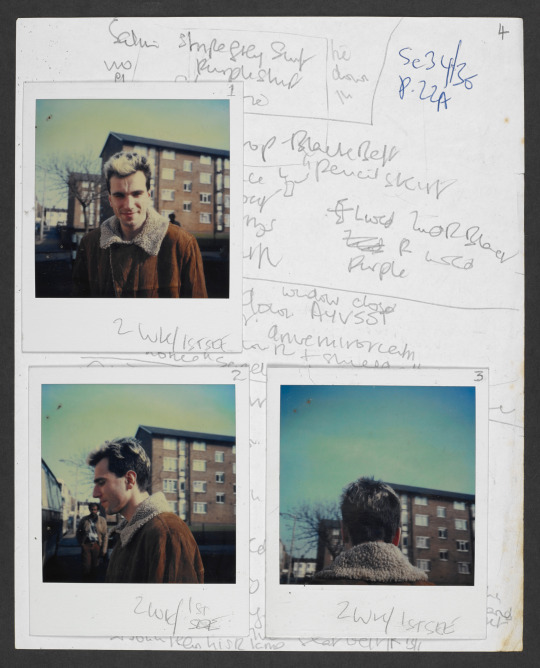








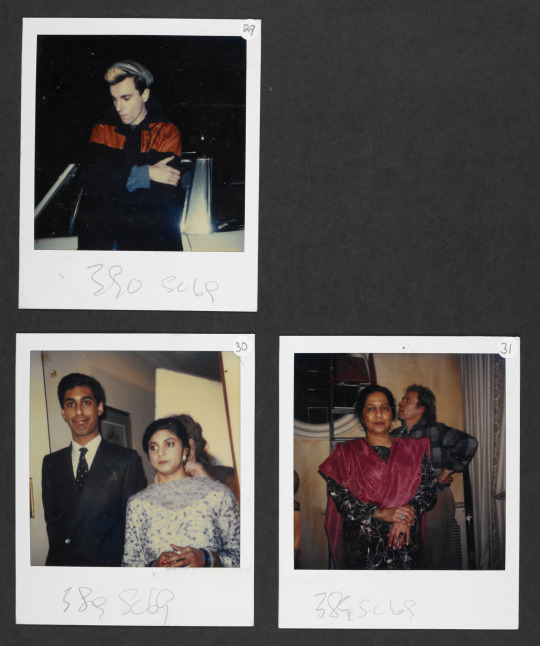
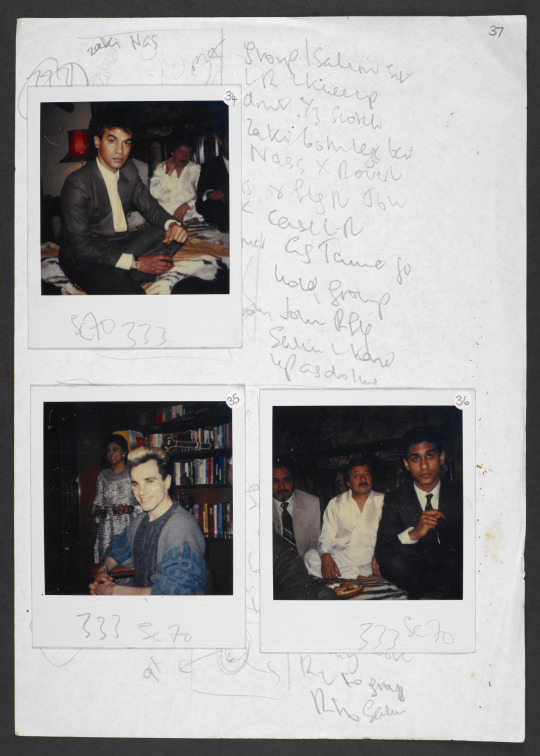

My Beautiful Laundrette: Continuity, costume notes, polaroids
These extensive costume and continuity notes were produced during the filming of My Beautiful Laundrette, a 1985 film written by Hanif Kureishi and directed by Stephen Frears.
Originally devised for television, Kureishi’s first screenplay was shot on a low budget in only six weeks. Set in Thatcher-era south London, the film is a ground-breaking exploration of race, class, politics and sexuality. It centres on Omar, a young British-Pakistani man who is given the opportunity to renovate his uncle’s laundrette, and Johnny, his boyhood friend who has fascist sympathies and who becomes Omar’s lover. The romantic relationship between these young men develops alongside the film’s other concerns ─ such as the British Asian struggle to maintain ethnic identity while assimilating into Western society, represented by Papa Hussain, an alcoholic, disillusioned socialist, and Uncle Nasser, a rich entrepreneur.
The film stars Saeed Jaffrey (Nasser), Roshan Seth (Papa Hussain), Daniel Day Lewis (Johnny) and Gordon Warnecke (Omar). My Beautiful Laundrette became a huge commercial and critical success after it was applauded by film critics at the Edinburgh Film Festival, leading to international distribution for cinema in 1986 and an Oscar nomination for Kureishi.
What are continuity notes?
When shooting a film, continuity notes are logged for every take to ensure continuity between screen direction, action, costume, props, and so on. Photographs, like the Polaroids shown here, support the work. Written in a messy hand, these notes convey the sense of an animated atmosphere on set.
For a film that is so concerned with identity and boundaries between characters, the continuity notes emphasise the role of costume as a signifier of status. Note the flash suit and aviator sunglasses worn by nouveau riche drug trafficker Salim, and the transformation of Omar from an unemployed lad in jeans and sweatshirt to the cleaned-up, suited businessman who is increasingly swayed by Thatcherite economic competiveness.
© Hanif Kureishi (Screenwriter), Penny Eyles (Script supervisor)
Held by the British Library (1) (2) (3)
Individual pieces in the link
#my beautiful laundrette#queer film#1980s#daniel day lewis#gordon warnecke#stephen frears#hanif kureishi#british library#bts
472 notes
·
View notes
Text
September 11, 1973: On the 50th Anniversary of the Coup in Chile
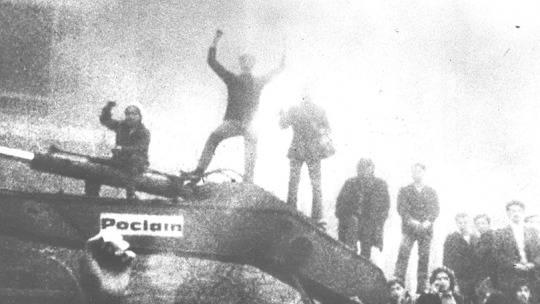
Today marks the 50th anniversary of the coup d’état in Chile, when a fascist junta led by dictator Augusto Pinochet overthrew the democratically elected socialist government of Salvador Allende. For those of us who are on the left, the story should be familiar by now: Allende had charted a ‘Chilean way to socialism' ("La vía chilena al socialismo") quite distinct from the Soviet Union and communist China, a peaceful path to socialism that was fundamentally anti-authoritarian, combining worker power with respect for civil liberties, freedom of the press, and a principled commitment to democratic process. For leftists who had become disillusioned with the Soviet drift into authoritarianism, Chile was a bright spot on an otherwise gloomy Cold War map.
What happened in Chile was one of the darkest chapters in the history of US interventionism. In August 1970, Henry Kissinger, who was then Nixon’s national security adviser, commissioned a study on the consequences of a possible Allende victory in the upcoming Chilean presidential election. Kissinger, Nixon, and the CIA—all under the spell of Cold War derangement syndrome—determined the US should pursue a policy of blocking the ascent of Allende, lest a socialist Chile generate a “domino effect” in the region.
When Allende won the presidency, the US did everything in their power to destroy his government: they meddled in Chilean elections, leveraged their control of the international financial system to destroy the economy of Chile (which they also did through an economic boycott), and sowed social chaos through sponsoring terrorism and a shutdown of the transportation sector, bringing the country to the brink of civil war. Particularly infuriating to the Americans was Allende’s nationalization of the copper mining industry, which was around 70% of Chile’s economy at the time and was controlled by US mining companies like Anaconda, Kennecott and the Cerro Corporation. When the CIA’s campaign of sabotage failed to destroy the socialist experiment in Chile, they resorted to assisting general Augusto Pinochet's plot to overthrow the democratically elected government. What followed was a gruesome campaign of repression against workers, leftists, poets, activists, students, and ordinary Chileans—stadiums were turned into concentration camps where supporters of Allende’s Popular Unity government were tortured and murdered. During Pinochet’s 17-year reign of terror, 3,200 people were executed and 40,000 people were detained, tortured, or disappeared, 1,469 of whom remain unaccounted for. Chile was then used as a laboratory for neoliberal economic policies, where the Chicago boys and their ilk tested out their terrible ideas on a population forced to live under a military dictatorship.
It shatters my heart, thinking about this history. I feel a personal attachment to Chile, not only because my partner is Chilean (his father left during the dictatorship), but because I’ve always considered Chile to be a world capital of poetry and anti-authoritarian leftism. The filmmaker Alejandro Jodorowsky asks, “In how many countries does a real poetic atmosphere exist? Without a doubt, ancient China was a land of poetry. But I think, in the 1950s in Chile, we lived poetically like in no other country in the world.” (Poetry left China long ago — oh how I wish I’d been around to witness the poetic flowering of the Tang era!) Chile has one of the greatest literary traditions of the twentieth century, producing such giants as Bolaño and Neruda, and more recently, Cecilia Vicuña and Raúl Zurita, among others.

To commemorate the 50th anniversary of the coup, the Harvard Film Archive has been screening Patricio Guzmán’s magisterial trilogy, The Battle of Chile, along with a program of Chilean cinema. I watched part I and II the last two nights and will watch part III tonight. It’s no secret that I am a huge fan of Guzmán’s work, and even quoted his beautiful film Nostalgia for the Light in the conclusion of my book Carceral Capitalism, when I wrote about the Chilean political prisoners who studied astronomy while incarcerated in the Atacama Desert. Bless Patricio Guzmán. This man has devoted his life and filmmaking career to the excavation of the Chilean soul.
Parts I and II utterly destroyed me. I left the theater last night shaken to my core, my face covered in tears.


The films are all the more remarkable when you consider it was made by a scrappy team of six people using film stock provided by the great documentarian Chris Marker. After the coup, four of the filmmakers were arrested. The footage was smuggled out of Chile and the exiled filmmakers completed the films in Cuba. Sadly, in 1974, the Pinochet regime disappeared cameraman Jorge Müller Silva, who is assumed dead.
It’s one thing to know the macro-story of what happened in Chile and quite another to see the view from the ground: the footage of the upswell of support for radical transformation, the marches, the street battles, the internal debates on the left about how to stop the fascist creep, the descent into chaos, the face of the military officer as he aims his pistol at the Argentine cameraman Leonard Hendrickson during the failed putsch of June 1973 (an ominous prelude to the September coup), the audio recordings of Allende on the morning of September 11, the bombing of Palacio de La Moneda—the military is closing in. Allende is dead. The crumbling edifice of the presidential palace becomes the rubble of revolutionary dreams—the bombs, a dirge for what was never even given a chance to live.
#Patricio Guzmán#film#Chile#history#salvador allende#socialism#marxism#coup#coup d'etat#The Battle of Chile#revolution#cinema#fascism#communism#geopolitics#political economy#Cold War#chris marker#memory#neoliberalism#capitalism#politics
97 notes
·
View notes
Text
SPOILERS FOR SALTBURN
I haven’t seen Promising Young Woman but I did just see Saltburn and now I’m so dubious about Fennell’s politics that I’m basically obligated to see PYW to confirm my suspicions. It’s not that I think she’s conservative necessarily, but more that she’s so upper class London nepo baby rich that she could aspire to socialist feminism as much as she likes but it’ll never land because her background precludes her from ever having anything relevant to say about class.
There were things I liked about Saltburn. The editing, performances, black humour, costumes, sets, cinematography (NOT the aspect ratio - will explain) and the ballsiness of certain “transgressive” scenes I did appreciate. This is what makes it so frustrating and disappointing as a film. If you turn your brain off, it’s a wild ride, quite hypnotic and lovely to look at in that specific dreamy way that the dark, cool interiors of a house get on the hottest days of the summer. I hated the 4:3 aspect ratio though, it was POINTLESS. Why was it used? Surely it would have made more sense to capture the grand expansiveness of the titular estate in widescreen? It just felt twee for twee’s sake, like it was shot to produce compositions ready-cropped for big gifs on tumblr.
The “shocking” “transgressive” “erotic” stuff is not particularly any of those things. I mean, for me anyway. It might titillate the type of new-puritan gen z-ers who self censor it to “seggs”, but there was only one sequence that felt really “wow, I haven’t seen that in movie before!” levels of Going There. And even then these scenes always felt self-consciously affected, like Fennell only included them because she wanted to write a movie with fReAkY stuff, as opposed to the freaky stuff coming organically from the characters. I remember sitting in the cinema to see Call Me By Your Name feeling like I was burning to a crisp at the scene where Elio huffs a pair of a man’s used swim trunks - because it felt so authentic to this expression of a character who is at critical levels of desperate teenage horniness. In Saltburn, when Oliver gets down on his knees and slurps Felix’s jizzy bath water, it’s like… okay? Why? What does he want? We saw him lie about knowledge of the fancy plates to ingratiate himself to the dad, we already have reason to distrust anything he says, so it’s hard to believe he has any authentic desire for Felix. And that’s the main problem with the whole movie - the writing is fairly atrocious.
There’s no mystery. There’s no ANYTHING. There’s a tiny quick-cut flash montage of future events in the movie right at the start of the thing, so already we’re going in with no doubts that Oliver is gonna go nuts. So we know that bad shit is gonna happen, and yet the movie pulls out a big Twist Ending reveal like we… weren’t supposed to know that he’s been bad from the beginning? We don’t need all these flashbacks to show us he’d planned his dastardly deeds offscreen the whole time when we’ve already seen him commit OTHER dastardly deeds ONSCREEN. He’s given zero motivation. He tells us he did what he did because he hates this rich family, starting with Jacob Elordi’s Felix, but he had planned the whole thing from before they ever even met, or saw how the family treats the other two main victims of class in the film, Pamela and Farleigh. When Oliver starts spinning his web, Felix has never been anything but genuinely kind to him. Felix never did him any personal wrong except being born handsome, popular, and rich.
That’s the other glaring issue. Fennell has said this is supposed be another one of these “eat the rich” satires, but…. beyond the usual foot-in-mouth clueless social blunders, the movie portrays none of the rich family as even all that bad. Oliver isn’t even all that poor! His family are revealed to be extremely comfortably upper-middle class! This is not Parasite!!! The worst ethical thing they do is cut off Farleigh from family money - but it’s obvious to the audience that this is actually Oliver’s fault. So all we’re left with is this main character who’s the worst of the lot, with no reason to do what he’s doing except for being an asocial loser creep. If you’re making a class satire in Britain and your message at the end of the film is “those creepy disgusting middle class will pervert and mutate themselves to have what the beautiful victimised rich people do” you’ve… uhh. Failed. Somewhere along the line.
It wants to be The Talented Mr Ripley, but it is confused and stupid. Given Fennell’s background and social circle, is it any wonder? It’s like she’s looked around at her fellow Eton Oxford lot and thought “so the poors hate us because we’re a bit silly and old fashioned, right? no wonder they’re jealous, we’re all so sexy and our houses are so nice! Of course they’d do anything to have this!” She hasn’t seemed to conceive of the fact that the working class in Britain hate the upper class because millions live in genuine poverty while they get to obstruct social change because of archaic birthright. That many people in Britain don’t actually want to be the upper class, they want an end to them.
The thing is, I had fun watching it. I laughed a lot, and then left the cinema distinctly unimpressed, as one often does after interacting with people who go to private school and are perfectly charming but clearly still think they’re better/smarter than you because they have generational land, or multiple houses. I worked for 6 years as the stable groom for the heiress to a publishing fortune, I’ve met plenty of these people, believe me. All this to say, that this is deeply frustrating because I would like to turn my brain off from the dodgy politics and just appreciate a movie that goes out of its way to be visually stylish and includes a scene where a sobbing Barry Keoghan gets naked and fucks the fresh grave of his boy best friend. Now that’s entertainment
#I love freaky weird stuff in movies that’s my favourite stuff#but not when it thinks it’s cool and clever for being freaky and weird#that’s being a tryhard#your movie should be freaky and weird because you are freaky and weird
58 notes
·
View notes
Text
THIS DAY IN GAY HISTORY
based on: The White Crane Institute's 'Gay Wisdom', Gay Birthdays, Gay For Today, Famous GLBT, glbt-Gay Encylopedia, Today in Gay History, Wikipedia, and more … February 19




1902 – F.O. (Francis Otto) Matthiessen was an educator, scholar and literary critic influential in the fields of American literature and American studies. (d.1950) The exchange of letters between him and his lover Russell Cheney are among the most revealing gay male documents of the 1920s.
Born in Pasadena, California, after his parents' divorce in 1915, Matthiessen lived on his grandfather's farm in Illinois, later attended boarding school in Tarrytown, New York. Toward the end of World War I, joined the Canadian Air Force. He entered Yale in 1919, where he was a member of Skull and Bones society, and graduated in 1923 with many honors, and then became a Rhodes Scholar at Oxford, receiving a B. Litt. in 1925.
Matthiessen's best-known book, American Renaissance: Art and Expression in the Age of Emerson and Whitman (1941), discusses the flowering of literary culture in the middle of the American 19th century, with Emerson, Thoreau, Melville, Whitman and Nathaniel Hawthorne.
While sailing for Oxford, he met the painter Russell Cheney; they would be lovers until Cheney's death in 1945. Cheney, though closeted in many ways, was a profoundly positive influence on Matthiessen, encouraging his interest in gay and lesbian literary figures like Walt Whitman and Sarah Orne Jewett.
The couple shared a cottage in Kittery, Maine for decades. In planning to spend his life with Cheney, Matthiessen went as far as asking his cohort in the Yale secret society Skull and Bones to approve of their partnership. With Cheney having encouraged Matthiessen's interest in Whitman, it has been argued that American Renaissance was "the ultimate expression of Matthiessen's love for Cheney and a secret celebration of the gay artist."
Matthiessen, as a gay man in the 1930s and 1940s, chose to remain in the closet throughout his professional career, if not in his personal life - although traces of homoerotic concern are apparent in his writings. In 2009, a statement from Harvard University said that Matthiessen "stands out as an unusual example of a gay man who lived his sexuality as an 'open secret' in the mid-20th century."
After Cheney's death in 1945, Matthiessen was increasingly distraught; he committed suicide by jumping from a window in 1950. Because Matthiessen's politics were left-wing, socialist, though not dogmatically Marxist, inquiries by House Un-American Activities Committee into his politics may also have been a factor in his suicide: writing in 1958, Eric Jacobsen referred to Matthiessen's death as "hastened by forces whose activities earned for themselves the sobriquet un-American which they sought so assiduously to fasten on others".


1921 – Dudley Cave was a British former soldier and pioneering gay rights activist (d.1999). He joined the Royal Army Ordnance Corps in 1941, aged 20, and was posted to the Far East. He was captured by the Japanese when Singapore fell in 1942 and was marched north to work on the Thai-Burma railway, 10 miles beyond the bridge on the River Kwai. He caught malaria and was imprisoned in Changi Prison in Singapore because he was unproductive. This may have saved his life. Three quarters of his company perished.
When back in Britain he had a job as manager of the Majestic Cinema, Wembley, but in 1954 he was sacked when it was discovered that he was gay. Also in 1954 he met Bernard Williams, an RAF veteran and school teacher, and they became lovers and co-campaigners for 40 years until Bernard Williams died in 1994.
In 1971 Dudley Cave joined the Unitarian Church and helped in securing the ordination of lesbians and gay men. He also conducted same-sex weddings.
In 1974 he was on the launch committee of the London Gay Switchboard, and he was still answering the telephone right up to his death 25 years later.
He and his partner, Bernard Williams, founded the Lesbian and Gay Bereavement Project in 1980, and they ran its telephone helpline for many years. After a battle with the Charity Commissioners this became the first organisation with 'gay' in its title to be given charitable status.
In the 1980s he worked on reconciliation with the Japanese and travelled a number of times to Japan to speak on the subject.
In November, 1998 he was OutRage!'s keynote speaker at its Queer Remembrance Day vigil at the Cenotaph where he layed a pink triangle wreath honouring gay people who died fighting Nazism and in the concentration camps.
Dudley Cave dedicated most of his life to challenging and fighting prejudice and seeking justice and equality for gay people especially in the areas of military recognition and issues of bereavement for gay people of all ages; he did so with great eloquence, dignity and integrity.


1925 – J. J. Belanger (d.1993) was member and officer in the Mattachine Society in the 1950s and 1960s, a volunteer in numerous causes in the 1970s and 1980s, and a collector of LGBT history, especially of AIDS-related materials of the mid-to-late 1980s.
The famous photo booth photo of J.J. Belanger above was rediscovered in 2014 and spread quickly through popular media such as The Advocate, TIME, Queerty, and blogs. It shows Robert Block and J. J. Belanger (right) in a photo booth photo in Hastings Park, Vancouver, British Columbia, 1953. It was taken at a time in Canadian history when the two men could have been arrested for kissing.
Joseph John Bertrund Belanger was born February 19, 1925, in Edmonton, Canada. He served in the Royal Canadian Air Force from 1942 to 1944 where he was awarded a Defense Medal, Canadian Voluntary Service Medal, and War Medal for his World War II service. He worked odd jobs in Vancouver and Calgary until 1954 when he joined the United States Air Force. He served for five years, earning the Aviation Badge, Good Conduct Medal, Outstanding Airman of the 26th Air Refueling Squadron, numerous other commendations, and a promotion.
Belanger became a member of the Mattachine Society in the early 1950s, but resigned in 1953 after an incident with police threatened to bring negative publicity to the organization. However, Belanger maintained contact with Hal Call and in 1958 became the Mattachine Society's Director of Public Relations. In 1959 he was voted out of the post, but still remained a member of the society.
From the 1950s Belanger lived in either San Francisco and Los Angeles, although the particulars of his life are documented only sporadically. He was the Los Angeles coordinator of the Eulenspiegel Society in the 1970s. In the 1980s he was politically involved with the San Francisco chapter of the Stonewall Gay Democratic Club, where he ran and lost a bid for treasurer in 1988. Also in the 1980s he volunteered for Project Inform and was a member of the Quarantine Fighter’s Group. Belanger was also a devoted collector of LGBT history, especially of AIDS-related materials of the mid-to-late 1980s.


Curtis in drag
1947 – John Holder Jr, better known as Jackie Curtis, was a famous transgendered film star, poet and playwright. (d.1985)
Curtis was born in New York City, and later died there of a drug overdose. He spent part of his life living and performing as a man (sometimes adopting a James Dean persona) and sometimes as a woman.
While living and performing in drag, she would typically wear lipstick, glitter around the eyes and in her frizzed-out red hair, and a dress, frequently ripped and torn, as were her stockings. This unique style, a combination of trash and glamour which Curtis pioneered in the late 1960s when frequenting such high profile nightclubs as Max's Kansas City, has prompted assertions that Jackie inspired the Glam Rock persona of the 1970s.
'Jackie Curtis is not a drag queen. Jackie is an artist. A pioneer without a frontier,' Andy Warhol said of his associate. Primarily a stage actor, Curtis debuted at the age of 17 in Tom Eyen's play Miss Neferititi Regrets. Curtis began to write his own plays immediately after this experience, often featuring famous transsexuals, such as his friend Candy Darling and, later, Holly Woodlawn, both of whom appeared in his productions which enjoyed successful runs Off-Off-Broadway and were well-reviewed in New York. Curtis's work is representative of the Theatre of the Ridiculous.
As writer and lead actress some of her plays include: Glamour, Glory and Gold; Amerika Cleopatra which featured Harvey Fierstein; Femme Fatale; and Heaven Grand In Amber Orbit with Holly Woodlawn, produced by John Vaccaro's Playhouse of the Ridiculous in 1970.
These plays caught the attention of Andy Warhol and his director Paul Morrissey, who cast Jackie and Candy in Flesh (1968) and, with the addition of Holly Woodlawn, in Women in Revolt (1971); a hilarious spoof of the women's liberation movement in which all the female leads are played by transsexuals and transvestites.
Apart from acting, Curtis also showed talent in poetry and singing. Jackie Curtis made two more movies during the 1980s. Drug addiction, however, had taken control of Curtis's life, eventually leading to his death.
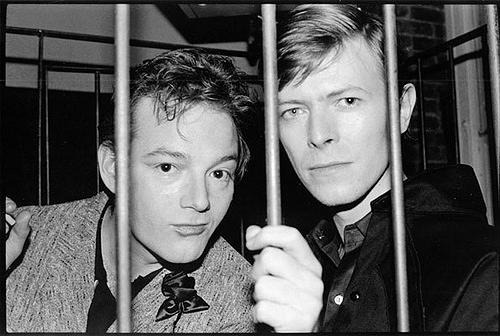
In 2004, a film based on Curtis's life, Superstar in a Housedress, brought Jackie Curtis back to the limelight, exposing some little known facts about the performer to the public. Curtis's influence on a number of people, friends and associates such as Holly Woodlawn, Joe Dallesandro and Penny Arcade, and observers such as David Bowie, is noted in the film.


1952 – California artist Lari Pittman creates visually beautiful and exciting paintings that depict the anxiety attendant on being a gay male in America. They confront the perils and dangers that threaten homosexuality even as they resolutely affirm homosexual love.
Lari Pittman was born in Glendale, California. Pittman spent much of his childhood in the Colombian cities of Cali and Tumace, where his father worked in the lumber industry. An effeminate child, he loved playing with his mother's jewelry. His desire to decorate with baubles received parental support and has deeply influenced his subsequent art.
After studying painting at University of California, Los Angeles from 1970 to 1973, Pittman transferred to the California Institute of Arts. Pittman held his first solo exhibition in 1982 to mixed reactions. His early works, full of obscure references, are purposely made to be difficult for the viewer to decipher.
In 1985, Pittman changed his style as the result of suffering a near fatal attack. One night, he discovered a burglar in his home. When he attempted to scare off the man, he was shot in the stomach. The injury resulted in a colostomy and a long period of recovery. After this harrowing, near death experience, Pittman decided to stop being evasive about his homosexuality and about the thematics of his work. He has since sought to erase the distinction between the private and the public as a means of gay activism.
Pittman's post-1985 imagery is much more open and readable than his earlier imagery. In This Wholesomeness, Beloved and Despised, Continues Regardless (1990), for example, he creates a complex narrative through the use of accessible images. At the center of this canvas is a gay couple making love. However, the decorative elements in the painting are both celebratory and ominous, ranging from an inscribed "69" (a motif he uses in several works) to a noose and a menacing figure wielding a knife. Thus, the work's narrative structure celebrates gay relationships, but also acknowledges the homophobic conditions in which they are experienced. The painting makes an affecting statement about the persistence and perseverance of gay love even in the face of hatred and persecution.

"In This Wholesomeness …
Pittman's paintings consider American identity and history, often incorporating motifs from folk art and popular culture, as in An American Place (1986). Such motifs give his work a cartoon-like quality, with every space packed with imagery and action.

An American Place
The emphasis that Pittman places on queerness has led some critics to describe him as the prince of queer agit-prop art. He has been attacked for being too political because he has dared to address the difficulties of life as a gay man in paintings that grab attention. Indeed, Pittman may be justly regarded as our foremost painter of gay pride.
He lives in Los Angles with his longtime companion, fellow artist Roy Dowell, with whom he sometimes collaborates.


1987 – Jeffery Self is an American actor, writer, and comedian.
Self is a native of Georgia, who grew up in the South. After attending middle school, Self persuaded his parents to let him be homeschooled to avoid dealing in high school with the fact that he was gay.
Self has appeared in many television shows as a recurring, featured or guest actor. He and Cole Escola starred in the sketch comedy series Jeffery & Cole Casserole, which aired on Logo TV for two seasons. He has also appeared in Desperate Housewives, 90210, Hot In Cleveland, Torchwood, Shameless, Difficult People, and as Liz Lemon's cousin Randy Lemon on NBC's 30 Rock. He is the author of two humor books: Fifty Shades Of Gay and Straight People: A Spotters Guide, as well as the young adult novels A Very Very Bad Thing and Drag Teen. He co-wrote, produced, and starred in the indie horror/comedy cult hit You're Killing Me. He was the host of the MTV series, Scream: After Dark, a talk show devoted to deleted scenes and interviews with the cast of the popular MTV horror series Scream. He currently plays Marc Doober on Search Party on TBS.
Self is openly gay. He dated Patrick McDonald of Fire Island for three years and publicly blogged about their breakup. On January 8, 2017, Self and his boyfriend, Augustus Prew, announced their engagement via Instagram. They were married on January 13, 2018 in Culver City, California.


1993 – The Crying Game, a film written and directed by Neil Jordan, portrays the relationship between a transsexual woman and an IRA fighter in London. In 1999, the British Film Institute named it the 26th greatest British film of all time.

2007 – In New Jersey the first same-sex couple, Daniel Gross and Steven Goldstein, held a civil union ceremony when hundreds of Gay couples were granted the same legal rights, if not the title, as married couples as New Jersey became the third state to offer civil unions.


24 notes
·
View notes